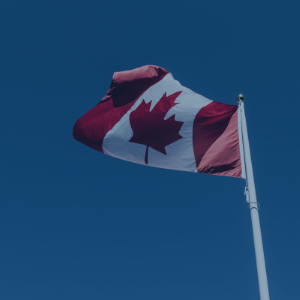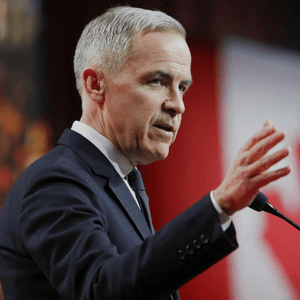
Ontario Liberals seen as best option to defeat Tories
The Ontario Progressive Conservatives open the 2022 provincial election with a healthy and potentially widening lead over the Liberals and the NDP, buoyed by Doug Ford’s personal brand, a diminished Liberal brand, and ambivalence over Liberal leader Steven Del Duca. These are the findings of INNOVATIVE’s latest online survey of 1409 Ontario residents, weighted to n=1000, conducted from April 27th to May 2, 2022.
Horserace
Among all voters, the PCs lead the Liberals by 9 points and the NDP by 13 points. The Tories’ numbers have improved since the beginning of 2022, while the Liberals and NDP numbers are down slightly. Regionally, the Tories are leading in the GTA, the South/West region, the North/East region, and are competitive in Toronto. Clustering Ontarians into six major groups based on their shared values, the Tories are popular with their traditional base of Populist Conservatives and Deferential Conservatives. They are also leading with Business Liberals and Thirty Moderates. Lastly, the Tories are unusually competitive among Left Liberals, and find themselves in a tight three-way race with a crucial segment of the Liberal coalition.
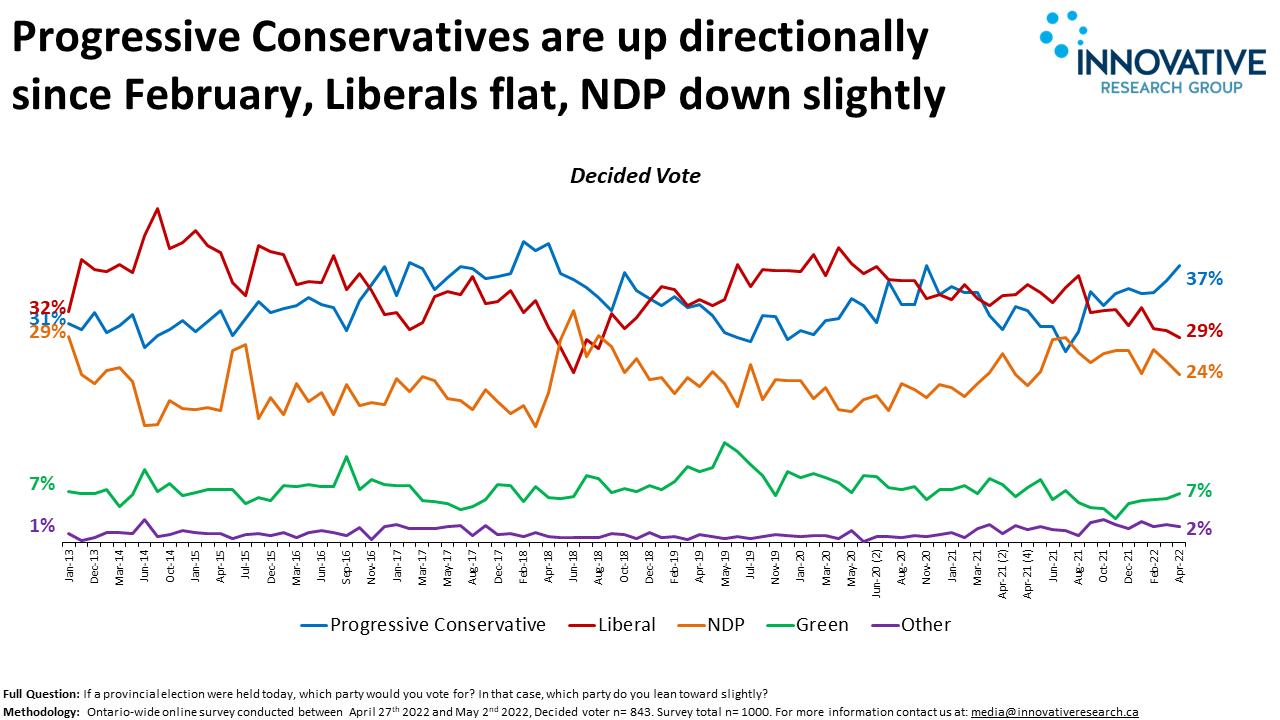
A majority of Ontarians (55%) believe it is time for a change in government, while 27% do not. One important group of voters are the 9% of Ontarians who say it is time for a change but also believe that the PCs remain the best option to form government.
Most Ontarians (55%) believe the election will be a two-horse race between the Liberals and the Tories. In terms of which party has the best chance to beat the PCs, the Liberals (48%) have a wide lead over the NDP (20%). However, 68% of voters who say the NDP is their first choice and 66% who say the Liberals are their first choice say that they would like to hear more before making up their minds in this election.
Party ID and Leadership
The Liberals face some unique obstacles that have not been present in recent elections. The 2021 federal election appears to have damaged to the Liberal brand in Ontario, all but wiping out the party’s Liberals’ longstanding brand affinity advantage.
Not only has the pool of Liberal partisans shrunk, but the Liberals may struggle to win the votes of people who still identify as Liberals. Just 63% of Ontarians who identify as Liberal partisans say they plan to vote for the Liberal Party.
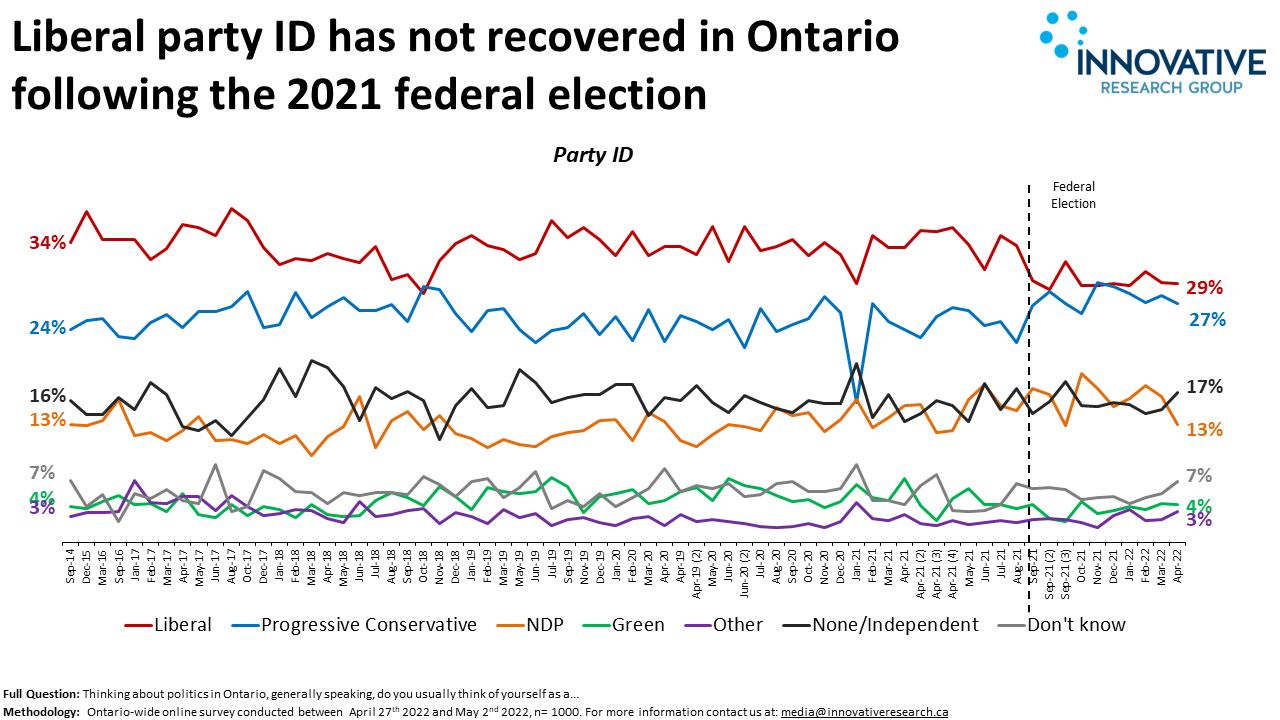
Liberal leader Steven Del Duca’s net favourability has deteriorated since the start of the year. Only 18% of respondents say they hold a favourable view of Del Duca, while 36% hold an unfavourable view. Many have not yet formed an opinion of Del Duca, but there is not much time left for voters to get to know him.
Doug Ford has higher favourability ratings than NDP leader Andrea Horwath, 33% to 29%. However, 48% Ontarians have an unfavourable view of Ford, compared to 41% for Horwath. The Tories’ current strength largely comes from Premier Doug Ford’s personal brand, which remains distinct from his party’s. While 26% of Ontarians identify as partisan Conservatives, another 15% support Ford personally even though they do not identify as PC supporters. Ford provides his party access to an unusually large pool of voters relative to historical norms.
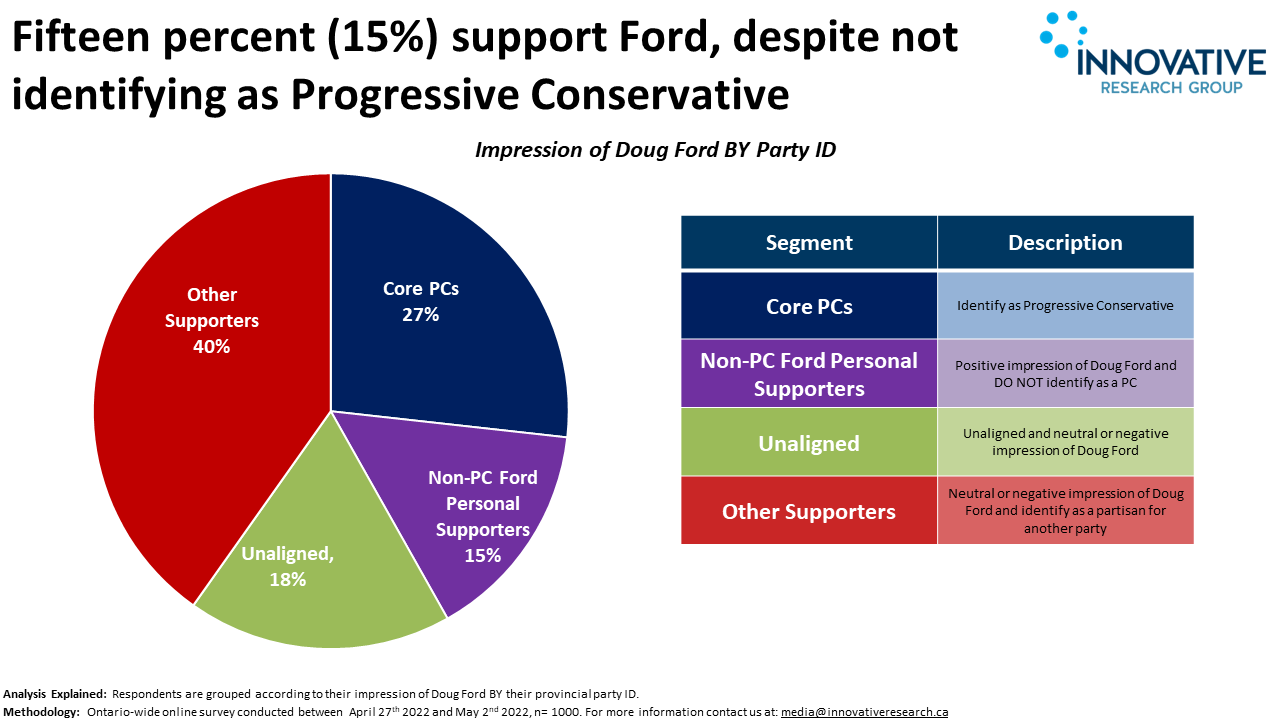
Summary
Premier Ford’s strong personal brand has the Progressive Conservatives well positioned heading into the campaign. While a majority want a change of government and a plurality think the Liberals are the best option to beat the Tories, Steven Del Duca has struggled to define himself as his party’s historic edge on party ID has evaporated.


